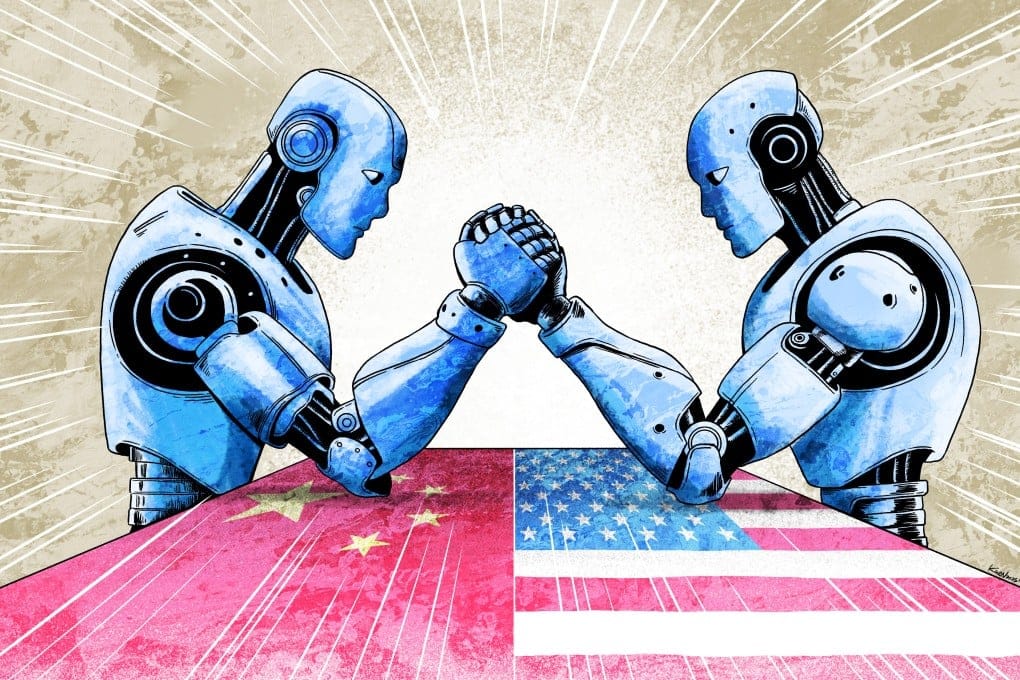Global Competition Heats Up: Which Nation Will Lead the Charge in Humanoid Robot Development?

It’s a bright spring morning in Hanover, Germany, where excitement fills the air at the Hannover Messe, one of the world’s largest industrial trade shows. Attendees are gathering to witness the unveiling of the G1, a humanoid robot developed by the Chinese company Unitree. Standing at approximately 4’3″ (130 cm), the G1 is designed to be more affordable and agile than its competitors, captivating onlookers with its impressive range of motion. Demonstrated by Unitree’s sales manager, Pedro Zheng, the G1 showcases its capabilities, engaging visitors who are eager to interact with this innovative technology.
Unitree’s G1: A New Contender in Robotics
The G1 humanoid robot has been making waves at trade shows, drawing attention for its unique design and functionality. Unlike many other robots, the G1’s human-like form allows it to connect with people on a different level. Visitors are seen reaching out to shake its hand and laughing as it waves or bends backward. This interaction highlights the G1’s ability to engage with humans, a feature that sets it apart from other machines at the event. However, while the G1 is capable of performing various tasks, it requires programming for autonomous functions, which customers must handle themselves.
Unitree is part of a growing trend among companies developing humanoid robots. The potential applications for these robots are vast, ranging from industrial use to domestic assistance. Businesses envision a future where robots can work without breaks or salary demands, while households dream of machines that can handle chores like laundry and dishwashing. However, the technology is still in its infancy. The challenges of integrating humanoid robots into unpredictable environments, such as homes or restaurants, remain significant. Experts emphasize the need for advancements in artificial intelligence to ensure these robots can operate safely and effectively in diverse settings.
The Competitive Landscape of Humanoid Robotics
As the demand for humanoid robots grows, several companies are racing to develop their own models. Notably, Tesla’s Elon Musk has announced plans to produce thousands of humanoid robots named Optimus, aimed at enhancing productivity in Tesla factories. Other automotive manufacturers, like BMW and Hyundai, are also exploring the integration of humanoid robots into their operations. Researcher Thomas Andersson tracks nearly 50 companies focused on humanoid robotics, noting that many are based in China, which has a robust supply chain and supportive government initiatives.
The G1 is priced at $16,000 (£12,500), making it an attractive option for research institutions and tech companies. However, the competition is fierce, especially from Asian firms that benefit from lower production costs and extensive resources. A recent report highlights that nearly 60% of funding for humanoid robots has been raised in Asia, with the U.S. capturing a smaller share. This financial backing allows Chinese companies to innovate rapidly and maintain a leading edge in the market.
Challenges and Innovations in Robotics
Despite the advancements in humanoid robotics, challenges persist. Companies like Kinisi, founded by Bren Pierce, are focusing on creating robots that are simpler to use and more cost-effective. Kinisi’s KR1 robot, designed for warehouse and factory environments, avoids the complexities of a full humanoid form by utilizing a mobile base instead of legs. This approach not only reduces costs but also streamlines manufacturing processes, as many components are sourced from Asia.
Pierce emphasizes the importance of user-friendly software, allowing workers to train the robots quickly. The KR1 can learn tasks after being guided by a human just a few times, making it accessible for average workers. However, even with these innovations, experts agree that the dream of humanoid robots performing household tasks is still a long way off. Pierce estimates that achieving this goal could take another 10 to 15 years, underscoring the complexity of developing robots capable of functioning in everyday environments.
The Future of Humanoid Robots
The future of humanoid robots remains uncertain, but the potential for growth in this sector is undeniable. As companies continue to innovate, the focus will likely remain on improving AI capabilities and ensuring safety in diverse environments. While the G1 and other humanoid robots are currently targeted at industrial applications, the dream of integrating these machines into homes and daily life is a vision that many in the industry aspire to achieve. As technology evolves, the next decade may bring significant breakthroughs that could redefine the role of robots in society.
Observer Voice is the one stop site for National, International news, Sports, Editor’s Choice, Art/culture contents, Quotes and much more. We also cover historical contents. Historical contents includes World History, Indian History, and what happened today. The website also covers Entertainment across the India and World.
Follow Us on Twitter, Instagram, Facebook, & LinkedIn

